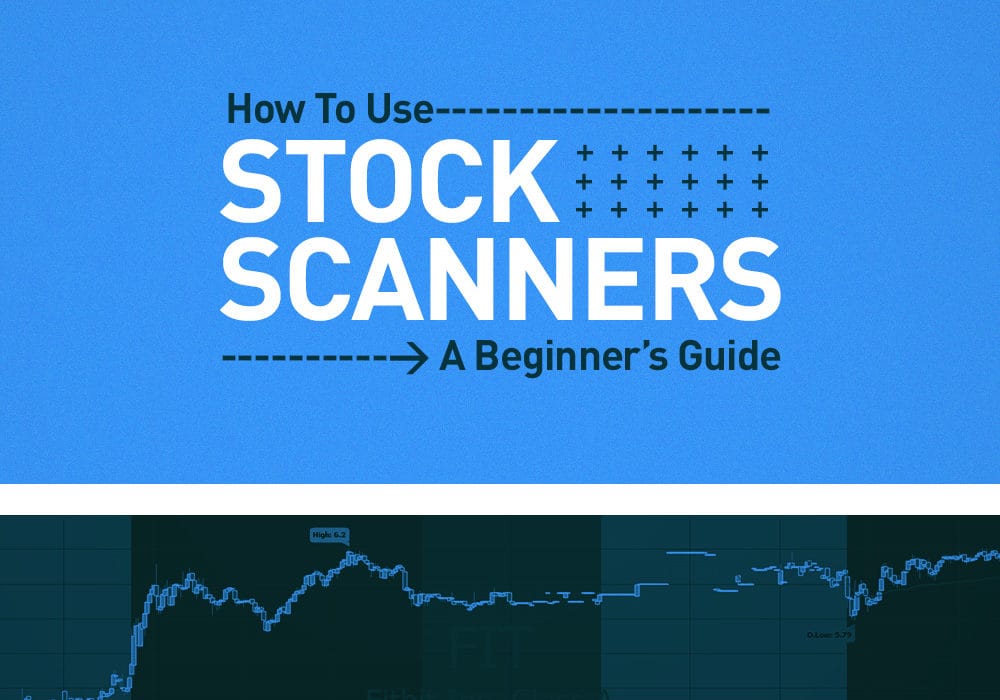How to Read and Act on Stock Scanner Alerts: Turn Noise Into High-Probability Trades

“Edge isn’t about seeing more tickers; it’s about filtering the right ones and acting with discipline.”
Why Scanner Alerts Matter
Modern markets move at light speed. A headline drops, volume spikes, and the trade is gone in minutes. Real-time scanner alerts surface tickers showing unusual activity—gappers, high RVOL, low float squeezes, options sweeps—before they hit mainstream watchlists.
Used incorrectly, scanners create “shiny-object syndrome.” Used correctly, they’re a target-acquisition system that feeds you only A-grade setups.
What a Stock Scanner Actually Does
A scanner sweeps every listed ticker and returns those that meet pre-set criteria such as:
| Criterion | Example Threshold | Why It Matters |
|---|---|---|
| Relative Volume (RVOL) | ≥ 3 × avg vol | Confirms real interest |
| Float | ≤ 20 M shares | Low float stocks move fast |
| Cost to Borrow (CTB) | ≥ 50 % | Signals short-squeeze potential |
| Price % Change | ≥ +10 % pre-market | Identifies momentum gappers |
| Options Flow | Unusual large call sweeps | Shows smart-money positioning |
Popular tools: Trade-Ideas, Finviz, Benzinga Pro, Thinkorswim scanners, TradingView filters.
(External ref → Finviz Screener Guide).
Step 1 – Build or Import a Quality Scanner Filter
- Define your strategy first.
- Gap-and-go? Use RVOL > 2, float < 50 M, pre-market gap > 5 %.
- Reversal plays? Use 52-week low scan + hammer candle signals.
- Limit noise: 5–8 filters max.
- Save presets and label them by setup (“Low-Float Squeeze,” “Large-Cap Momentum”).
🔗 Internal link: EMAs Explained – pair EMA trend filters with your scans.
Step 2 – Triage the Alert in 30 Seconds
When the alert fires, ask:
- Trend Bias: Above or below VWAP & 9 EMA?
- Volume Confirmation: Is volume > first 1-min candle?
- Catalyst: News? Earnings? Sector sympathy?
- Spread/Liquidity: Tight enough to enter/exit?
- Chart Structure: Clear support/ resistance for stop & target?
If 3 of 5 boxes aren’t checked—pass. Discipline beats FOMO.
Step 3 – Chart Checklist Before Entry
| Check | Ideal Reading |
|---|---|
| Price vs VWAP | Holding above VWAP in uptrend |
| RVOL | ≥ 3 (heavy interest) |
| Float | < 20 M for squeezes; ignore for large caps |
| Tape | Time-&-sales shows stacked bids |
| Level 2 | No hidden sellers at key levels |
Screenshot your checklist in TradingView and save to your trade journal.
Step 4 – Plan the Trade (Risk/Reward)
- Entry: On reclaim of VWAP or micro-pullback to 9 EMA.
- Stop Loss: Below last higher-low or VWAP (whichever tighter but logical).
- Profit Target 1: Prior day’s high or whole-dollar level.
- Profit Target 2: Measured move (range × 1.5).
🔗 Internal link: Stop Losses Guide – set iron-clad exits.
Example Trade
- Alert: Ticker $XYZ pops on Low-Float Squeeze scan (RVOL = 9, CTB = 110 %).
- Quick triage: Positive news, above VWAP, float 8 M.
- Entry: Pullback to VWAP $5.20 with hammer.
- Stop: $5.00 (below VWAP). Risk $0.20.
- Target 1: Pre-market high $5.80 (+ $0.60). R/R = 1 : 3.
- Outcome: Hits target in 12 min; scale ½, trail rest with 9 EMA.
Common Scanner Mistakes
❌ Chasing every alert—ends in overtrading.
❌ Ignoring volume confirmation—fake breakouts.
❌ Trading illiquid tickers—wide spreads eat profits.
❌ Setting market orders after alert—slippage hits hard.
Fix: Pass 80 % of alerts. Only trade the 20 % that match your pre-defined edge.
Related Reads (Internal Links)
Stay Ahead of Every Setup 🔔
Ready to trade only the highest-quality alerts?
👉 Join Our Free Live Alerts — real-time call-outs, levels, and volume spikes.
👉 Hop in the Discord — chat with disciplined traders and level up faster.
Final Word 🚀
Stock scanner alerts are only noise—until you add discipline, a battle-tested checklist, and strict risk management. Master the triage process above, and you’ll turn random pings into consistent, high-probability trades.
Trade smart, manage risk, and let the best alerts come to you.




